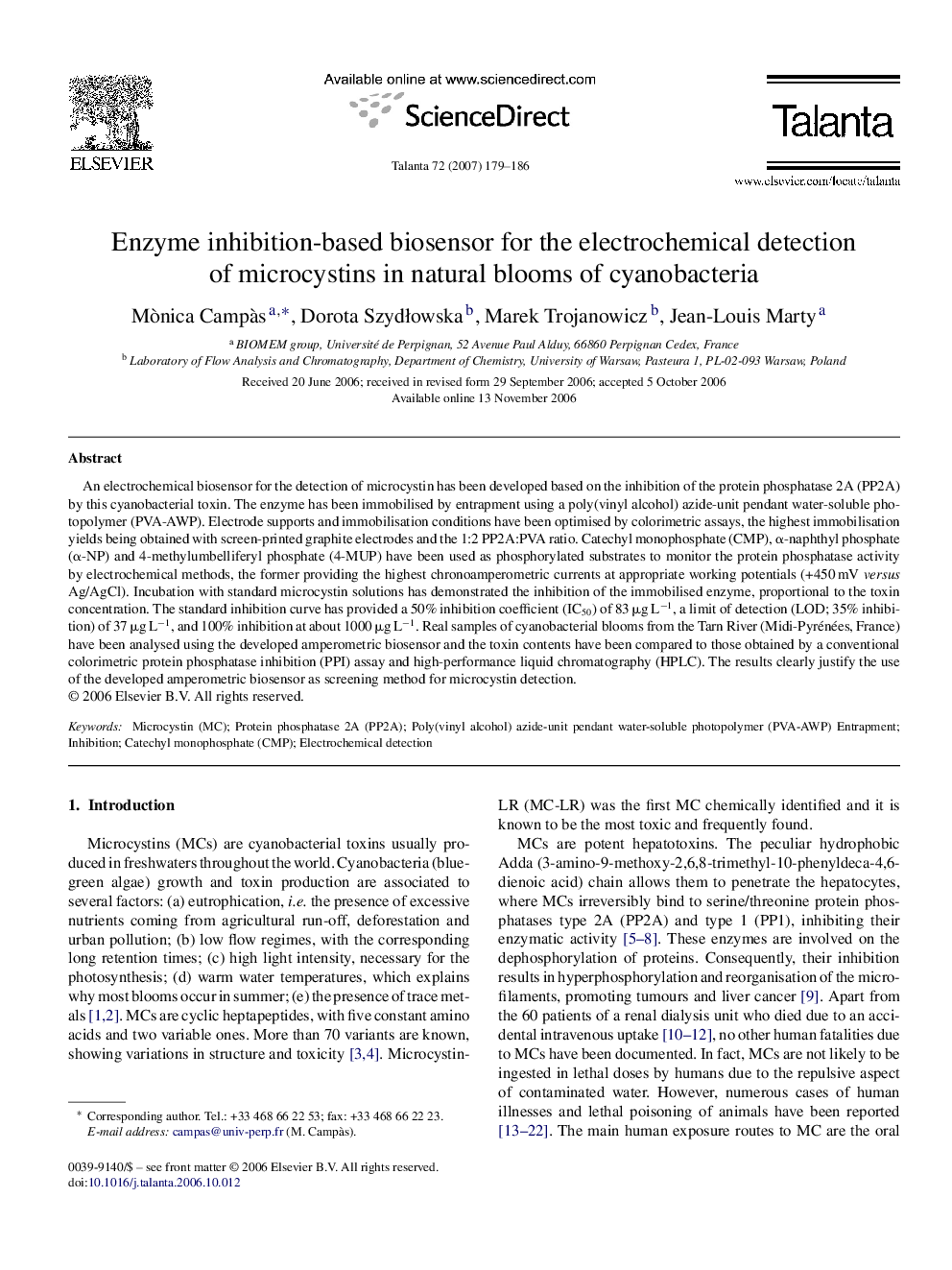| Article ID | Journal | Published Year | Pages | File Type |
|---|---|---|---|---|
| 1244014 | Talanta | 2007 | 8 Pages |
An electrochemical biosensor for the detection of microcystin has been developed based on the inhibition of the protein phosphatase 2A (PP2A) by this cyanobacterial toxin. The enzyme has been immobilised by entrapment using a poly(vinyl alcohol) azide-unit pendant water-soluble photopolymer (PVA-AWP). Electrode supports and immobilisation conditions have been optimised by colorimetric assays, the highest immobilisation yields being obtained with screen-printed graphite electrodes and the 1:2 PP2A:PVA ratio. Catechyl monophosphate (CMP), α-naphthyl phosphate (α-NP) and 4-methylumbelliferyl phosphate (4-MUP) have been used as phosphorylated substrates to monitor the protein phosphatase activity by electrochemical methods, the former providing the highest chronoamperometric currents at appropriate working potentials (+450 mV versus Ag/AgCl). Incubation with standard microcystin solutions has demonstrated the inhibition of the immobilised enzyme, proportional to the toxin concentration. The standard inhibition curve has provided a 50% inhibition coefficient (IC50) of 83 μg L−1, a limit of detection (LOD; 35% inhibition) of 37 μg L−1, and 100% inhibition at about 1000 μg L−1. Real samples of cyanobacterial blooms from the Tarn River (Midi-Pyrénées, France) have been analysed using the developed amperometric biosensor and the toxin contents have been compared to those obtained by a conventional colorimetric protein phosphatase inhibition (PPI) assay and high-performance liquid chromatography (HPLC). The results clearly justify the use of the developed amperometric biosensor as screening method for microcystin detection.
